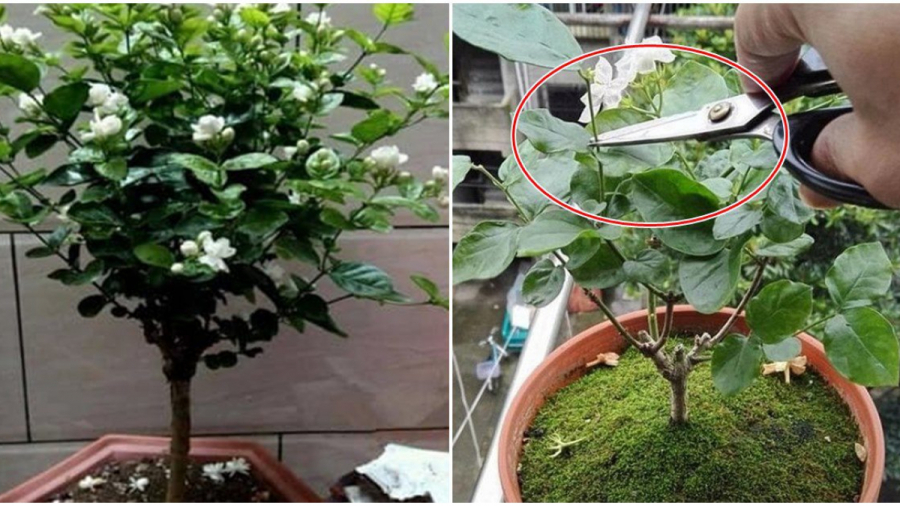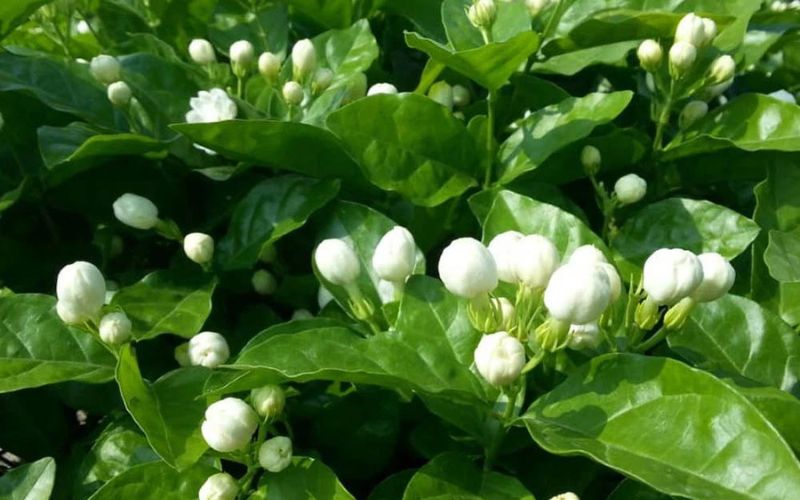Jasmine has a delicate and gentle fragrance, but it surprisingly favors organic manure with a slight pungent odor. Enthusiastic growers of this flower suggest that by irrigating the plant with a bit of this “stinky water,” the scent of the blooms will undoubtedly be enhanced, and a hundred flowers will blossom at once, each one large and beautiful.
How to Keep Your Jasmine Green and Blooming All Year Round
Apart from its medicinal uses, jasmine is also utilized as a flavoring agent in some tea-exporting factories. The essential oil extracted from jasmine is further used in cosmetic production.
For jasmine to thrive, the temperature must exceed 20 degrees Celsius, at which point the plant will flower. An intriguing characteristic is that jasmine typically blooms on new branches, and it is rare for flowers to reappear on old, already-bloomed branches. Therefore, to encourage more flowering, regular pruning is necessary, especially on branches that have previously flowered and older ones. This also stimulates the growth of new shoots and branches. With more side branches, the plant will produce more flowers.

Pruning is essential for jasmine plants to promote new growth and flowering. Focus on pruning branches that have already bloomed and older, mature branches.
Of course, after pruning, remember to fertilize the plant adequately to ensure sufficient nutrition for the development of side branches. After pruning, it is beneficial to add compound fertilizer. After 15 days, the side branches will grow 3-4 pairs of leaves and are about to form flower buds. At this time, it is necessary to apply phosphate and potash fertilizer. Water the plant with potassium dihydrogen phosphate every seven days. Watering twice a day will ensure that the flower buds bloom beautifully. With this care, your jasmine will thrive and bloom throughout the year.
Using “Stinky Water” to Enhance the Fragrance
Interestingly, while jasmine has a gentle fragrance, it thrives with organic manure that has a slight pungent odor. You can use manure types like chicken or sheep manure, or other organic fertilizers, by soaking them in water and then using the solution to irrigate the plant.
If you don’t mind the smell of these manures, you can also make your own fermented fertilizer by soaking and fermenting a small amount. Then, occasionally dilute the fertilizer and water your jasmine. The flowers will bloom more vibrantly and with a more intense fragrance.
Additional Tips for Growing Jasmine
When caring for jasmine, ensure you provide the following environmental conditions:
+ Soil: Choose well-drained, loose soil that doesn’t become waterlogged. Fertilize the soil once a month to provide adequate nutrition.
+ Water: Jasmine is quite drought-tolerant and can survive a few days without water, but it is crucial not to overwater as this may kill the plant. Water the jasmine generously when you do, and only water again when the soil is completely dry.

Jasmine is used as a flavoring agent in the production of export-quality tea.
+ Light: Jasmine thrives in sunny conditions. If growing indoors, place the plant in a sunny spot and take it outside to sunbathe 2-3 times a week to enhance its photosynthetic capacity. If kept permanently in the dark, the plant will initially grow normally but will eventually wither and die.
“The Secret to a Bountiful Star Apple Tree: Attracting Abundance with This Simple Trick”
Growing the carambola tree is a popular trend among many families nowadays. Not only does it serve as a decorative plant, but it also bears delicious and nutritious star-shaped fruits that can be enjoyed fresh or used in various culinary dishes and beverages. With its vibrant green foliage and unique fruit shape, the carambola tree makes an attractive addition to any garden or backyard, bringing both beauty and health to your home.



































